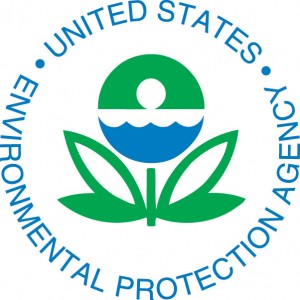The stated mission of the U.S. Environmental Protection Agency (EPA) is protecting America from “significant risks to human health and the environment.” This was previously driven by science, but too often EPA’s current actions are spurred by the desire of Agency bureaucrats to simply expand regulatory authority.
While its most recent primary ambition has been changing the energy marketplace in favor of “clean” fuels, EPA is regularly engaged in other agenda-driven activities out of view of the mainstream media and the average American family.
A primary battlefront over the last several years has been chemical regulation. As other parts of government deal with sequestration cuts, EPA’s chemical management programs received a hefty increase in the budget released by the President this spring. Of the $8.2 billion earmarked for EPA, a whopping $682.2 million would be devoted to the Agency’s chemical safety and pollution prevention activities.
According to EPA, the budget would “sustain its success in managing potential risks of new chemicals entering commerce without impacting progress in assessing and ensuring the safety of existing chemicals.”
But a close look at EPA’s approach over the last five years demonstrates that agency bureaucrats have very little interest in actually assessing a chemical’s risk. Instead, EPA regularly jumps right into risk management without fully scientifically studying any potential risk posed by chemicals in its sights.
Historically, there had to be some precipitating incident raising the question of risk before EPA triggered a costly investigation under the Toxic Substance Control Act. But today’s EPA has gone rogue on science, becoming a governmental Pinocchio with the environmental left a green, unaccountable Geppetto pulling its strings.
A telling example is the EPA’s interest in siloxanes, silicone materials used to make soap slippery and cell phones smooth. They have wide use in medical devices and are key to making prosthetic limbs comfortable — an application critical to thousands of wounded warriors. They are non-allergenic, odorless, colorless, anti-microbial and most importantly – innocuous.
There are no incidents of environmental or human injury related to siloxanes. They have been tested repeatedly privately and by governments – including the UK and Canada – and each time determined to be safe for the environment and human health. Expert scientific panels have also given siloxanes a clean bill of health.
And yet, the EPA is demanding the silicones industry do even more costly environmental testing to aid EPA’s planned risk assessment for a siloxane known as “D4.” The industry, with full confidence in the safety of its product, has voluntarily proposed monitoring 10 wastewater treatment sites around the country based on the highest possible siloxane concentrations as a “worst case scenarios.”
At the beginning of the negotiating process initiated almost a year ago, EPA suggested its data needs could only be met by monitoring 42 sites. As talks with industry unfolded, EPA revised its plan to 25, then 16, but always failed to provide adequate scientific justification. The EPA’s number of required sites appears willy-nilly.
Arbitrary also is Agency insistence that the industry provide additional data on “indirect discharge sites.” These are wastewater treatment plans somewhere down the road from siloxane manufacturers but with no direct infusion from the plants. The weak, watered-down data from such monitoring would be worthless, but cost additional millions likely to be passed on to consumers.
It is clear that EPA has two demonstrable but unspoken goals in negotiations with the silicones industry. One is to regulate and control siloxanes, regardless of any actual risk to the environment. Despite the Agency’s claims to want to do a risk assessment, you need only to hear the rhetoric being used by Agency officials to understand that EPA is already looking at risk management options for D4.
Secondly, EPA would also like to set a new precedent and give special interest groups direct say in the risk assessment process. Out of nowhere, EPA recently informed the industry it would rely on a little-used “peer consultation” process for D4 risk assessment. Details on this panel – from makeup to specific charge – are vague at best, but easy to guess.
Industry observers have expressed concerns about EPA’s new found embrace of peer consultations (not contained in EPA protocols) as well as associated process delays to “protecting human health and the environment” that such an unusual practice could create. As with every regulatory issue, public commentary on siloxanes and D4 has remained open for all stakeholders, private and organizational.
As EPA approaches final agreement on the number of silicones monitoring sites required, it would do well to remember what it is chartered to do, rather than what it wants to do. The wide swath of industries impacted by EPA actions are not someone else’s problem – they affect everyone worried about the rising cost of consumer products and energy.
. . . . . . . . .
Kerri Toloczko is a Senior Fellow at Frontiers of Freedom, a public policy institute dedicated to promoting individual freedom, peace through strength, limited government, free enterprise, and traditional American values.

